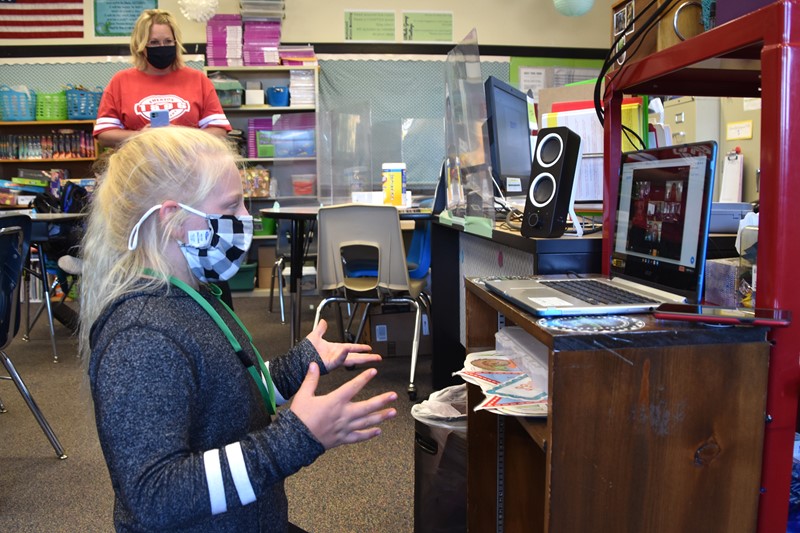For years, Westerville elementary students got a deep dive into soil and erosion through in-person interactive demonstrations with Linda Pettit, an environmental education specialist with the Franklin Soil and Water Conservation District.
But health and safety guidelines in response to the COVID-19 pandemic have Pettit taking her soil lessons and experiments to Westerville classrooms virtually this year.
On Tuesday, she and Amy Tressler, also an environmental education specialist with Franklin Soil and Water, were displayed on the whiteboards of fourth-grade classrooms at Emerson Elementary via Zoom. Teachers Mara Clark and Melissa Taylor set up separate laptops in their classrooms so students could ask and answer questions directly to their guest speakers.
“Our preference would certainly be to work directly with the students in the classroom, but we are happy that on-line programming works as well as it does,” Pettit said. “It is great to be able to see the students and have some interaction with them through the virtual platform.”
In addition to Emerson, Pettit and Tressler will host lessons for teachers at Alcott Elementary and the Westerville Virtual Academy. (Interested in learning more about Franklin Soil and Water’s education programs or booking a presentation? Learn more here.)

Clark said she is thrilled she and her students can continue to learn from Pettit, even virtually. Pettit helps students realize why they should care about the topics in our fourth-grade science curriculum.
“One of the most important things to me when I teach any topic is uncovering the connections from classroom learning to real-world ideas,” she said. “Including members of our community is so important in this process. I am never the expert on any topic, and when I can tap into the expertise of professionals in the field, it is always so much more exciting for the students and me.”
Pettit explored erosion with students — what causes it, why it’s a problem and how can it be prevented. She gave students background on various related topics, demonstrating the weathering that occurs when rocks grind against each other, understanding the difference between soil and dirt, diving into the various forms of erosion and discussing the impact of erosion on land and water quality.
The presentation culminated with an experiment using a soil erosion simulator, where students had to predict and compare the effects of rain falling on pavement, grass, bare soil and mulched soil.
Clark said her students loved the virtual lesson and remember Pettit when she visited their third-grade classrooms for a lesson on soil.
“She does such a great job connecting to our curriculum to keep them engaged,” she said.
Fourth-grader Kaitlyn Cook shared her thoughts throughout the lesson, weighing in on the differences between soil and dirt, predicting which would filter the rainwater the best and how planting flowers can help prevent erosion. When Pettit finished her presentation and prepared to disconnect from the Zoom meeting, Cook had one more comment.
“It’s cool to be able to learn all about these types of soil,” she said. “It’s really fun. Thank you.”